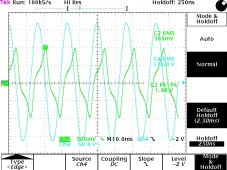thewilliam
New Member
- Joined
- Oct 6, 2022
- Messages
- 34
Recently acquired some Solar stuff from an estate. I've already read a lot and could set it up to power my pool equipment this weekend for an experiment. - maybe a 1kw load.
It's probably a bit undersized for my house, it was originally intended for a garage/shop.
Just trying to figure out what to do - how best to use it. I've downloaded the last three years of hourly usage from my utility - this past , HOT, summer there were maybe 30 days where usage exceeded 2500 watts in any given hour - that will be my hvac load - noon to sometimes 2100, my house stucco and attic really holds the heat. I don't have a feel for instantaneous peaks.
TIA for the help.
12 ea CS1Y 400MS panels, 48v 400 watt
2 Eco-worthy 6 string combiners
1 Growatt SPF 5000TL parallel option
1 Growatt 5000 ES - the grounded-neutral version
One 5 kwh Terli battery Helio 5
Some mounting clips
No racks, definitely going to need more mounting hardware.
Hourly usage stats for last three years :
Between hours of 0600 and 2200
TIME --- number
1000 --- 6
1100 --- 29
1200 --- 57
1300 --- 86
1400 --- 115
1500 --- 120
1600 --- 126
1700 --- 94
1800 --- 68
1900 --- 33
2000 --- 18
2100 --- 8
2200 --- 2
It's probably a bit undersized for my house, it was originally intended for a garage/shop.
Just trying to figure out what to do - how best to use it. I've downloaded the last three years of hourly usage from my utility - this past , HOT, summer there were maybe 30 days where usage exceeded 2500 watts in any given hour - that will be my hvac load - noon to sometimes 2100, my house stucco and attic really holds the heat. I don't have a feel for instantaneous peaks.
TIA for the help.
12 ea CS1Y 400MS panels, 48v 400 watt
2 Eco-worthy 6 string combiners
1 Growatt SPF 5000TL parallel option
1 Growatt 5000 ES - the grounded-neutral version
One 5 kwh Terli battery Helio 5
Some mounting clips
No racks, definitely going to need more mounting hardware.
Hourly usage stats for last three years :
- 85% less than 2 kW
- 9% between 2 and 3 kW
- 5% greater than 3 kW
Between hours of 0600 and 2200
- 8% greater than 3 kW
- 79% less than 2 kW
TIME --- number
1000 --- 6
1100 --- 29
1200 --- 57
1300 --- 86
1400 --- 115
1500 --- 120
1600 --- 126
1700 --- 94
1800 --- 68
1900 --- 33
2000 --- 18
2100 --- 8
2200 --- 2
Last edited:



